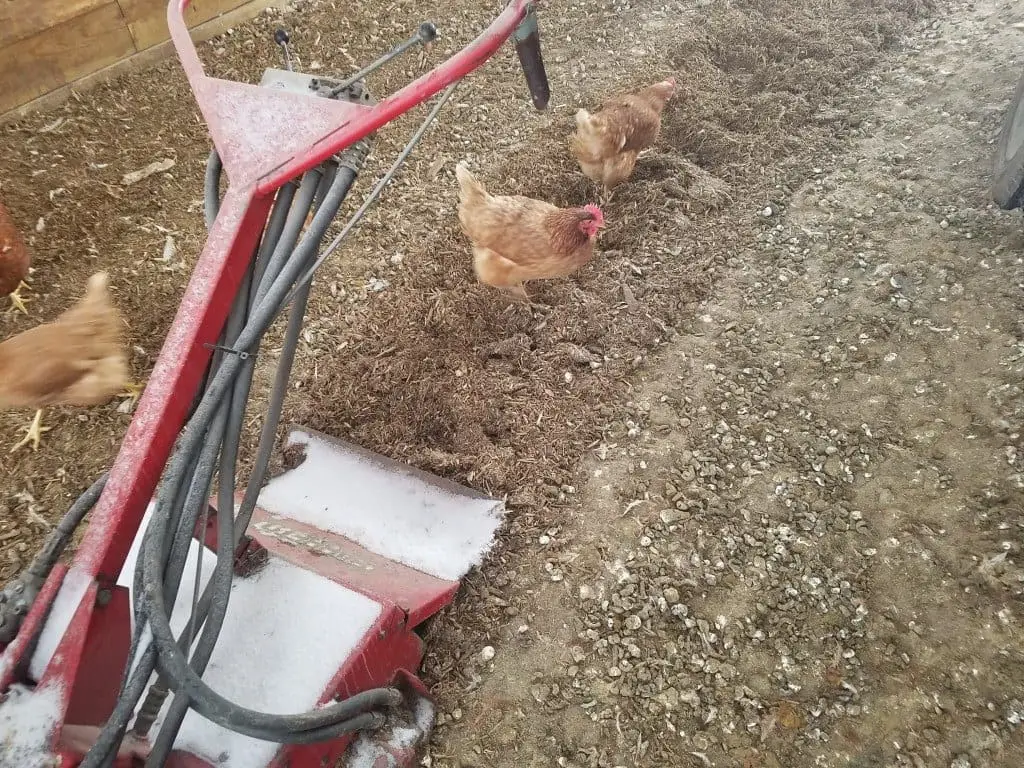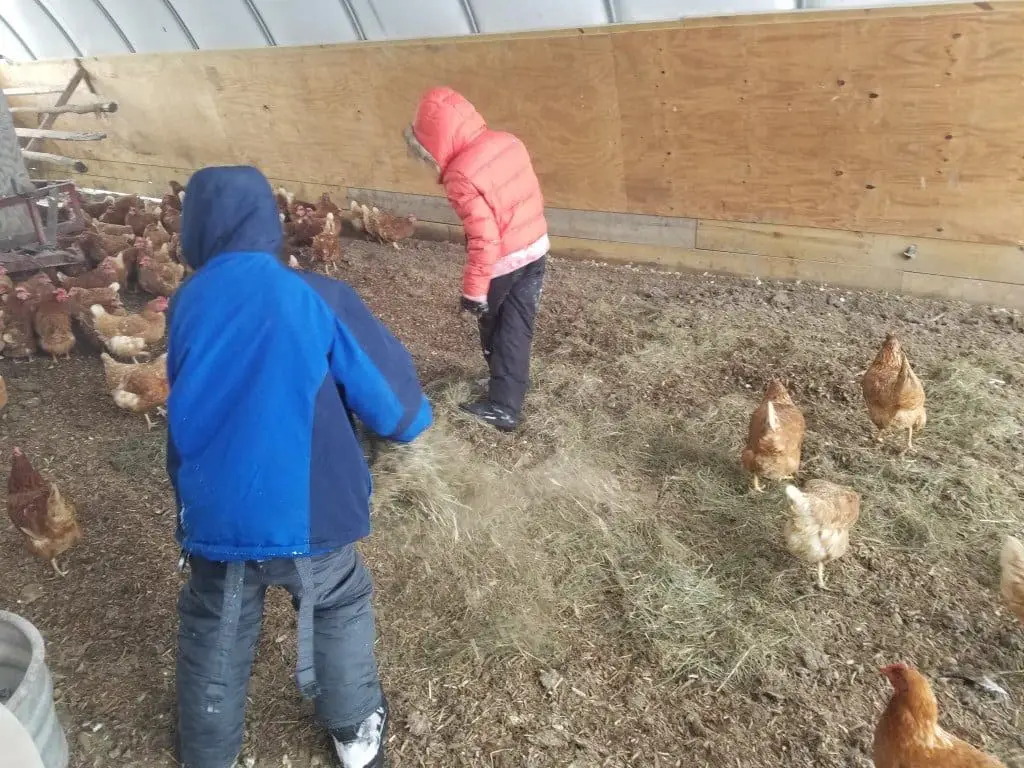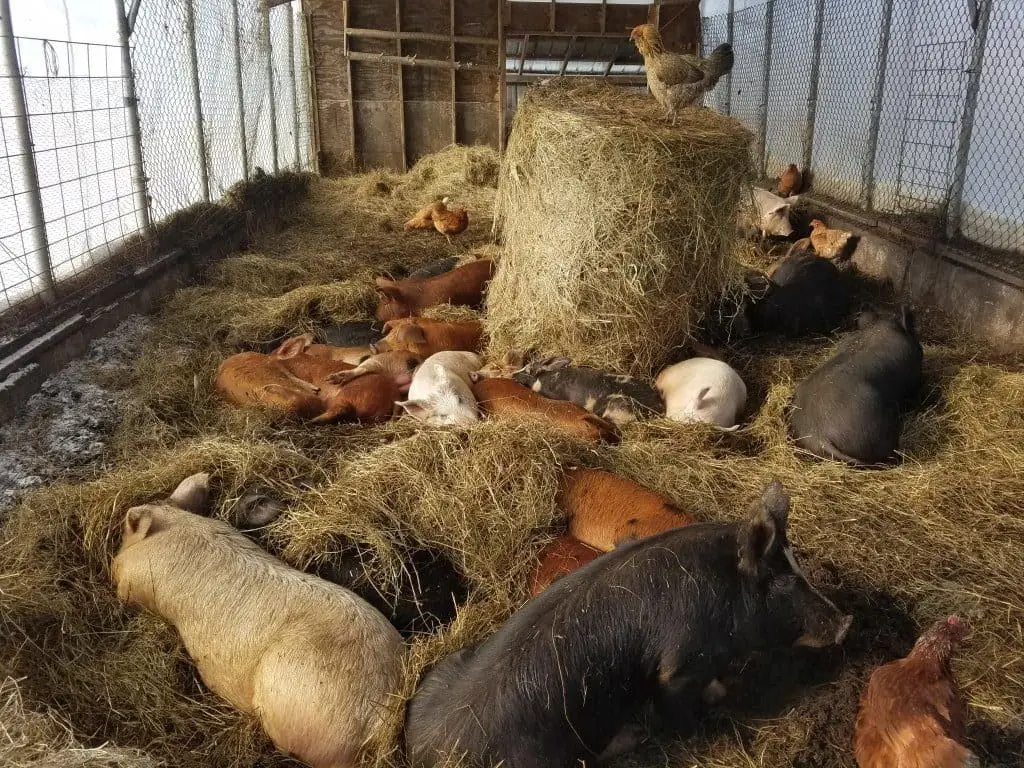This winter I’ve changed up my bedding management for the laying hens. They are free to walk out of their hoophouse, but with everything consistently snowbound this winter there hasn’t been much for them to find out in the fields and so they prefer to stay closer to home. All those hens dropping turds all day and night makes for messy bedding.

Instead of adding new bedding, I’ve been running the rototiller through the building once every week or two. Chicken manure tends to form a cap on the bedding, and this is especially the case in below-freezing weather. The rototiller quickly turns and blends in the manure, so I get a lot more use out of the wood chip bedding. I estimate I’m saving about $200 per month in bedding compared to our costs last year. The time to run the tiller is about the same as the time required to add new bedding material, so that’s a wash. There’s fuel use for the tiller, but at $2 per month we don’t need to fret too much about that. I don’t know if I could justify owning a tiller solely for bedding one chicken hoophouse, but this old workhorse is also our gardening tiller and it has already paid its way long ago.

I can’t predict if this method will work indefinitely. Sometimes this hoophouse takes on wetness on the uphill side during the spring thaw, so I might need to add more bedding to keep things from getting soupy (and stinky) once the weather climbs above freezing. Even if the bedding remains dry, there may be a point where the carbon-to-nitrogen ratio is too imbalanced and the bedding can’t handle the manure load. Judging by the clean tracks and fluffy texture I’m getting, this isn’t close to that point yet. I’ll monitor and adjust as I go.

I’ve tried using the tiller several times for the pigs, but their bedding is covered in a thick layer of long-fibered hay, so the machine has trouble getting through the hay. The L-shaped tiller blades are ideal for friable dirt and wood chips, but wet hay either tangles up or compacts down. Perhaps a PTO-attached tiller would be able to muscle through despite the design inadequacies, but getting one of those hitched and unhitched would be a hassle and trying to maneuver it in our small hoophouses would be frustrating. For now, our pig bedding is just a deep base layer of wood chips followed by deep hay, occasionally touched up with new wood chips as the season progresses. If we had a larger operation, a purpose-made bedding conditioner (and a skidsteer to run it!) would be useful, but that’s a whole lot more iron than is appropriate at our scale.

3 thoughts on “Bedding Management”
Natural farming enthusiasts would probably say use inoculated bedding. But cold temps would cause the bacteria to hibernate, and below freezing might kill some. It works OK in warmer periods. Farming in temperate climate looks a real challenge but you’re doing fantastic.
I spread composted bedding from the previous year as a thin base layer before building up the new bedding. Do you think this provides the sort of inoculation I need? Obviously the bacterial action slows or stops in the coldest weather, but I suspect that it helps get things off to an earlier start in the spring.
I think that does! And now that you mention it, that was probably what has happened to our pig bedding of 2 years (now on its 3rd year). We never cleaned up this bedding and never inoculated it, and yet it worked pretty much the way an inoculated deep litter bedding was supposed to work. But this is in tropical climates, although now it is a wetter than usual and mildly smelly because of La Niña (been raining for long periods since around October and we’re expected to have this type of weather until March). So getting the pig out next month to let the bedding dry and ‘fallow’ until summer (if it ever comes) is something we’ll probably need to do.
Do you notice any difference in areas where you’ve put in last year’s composted bedding?